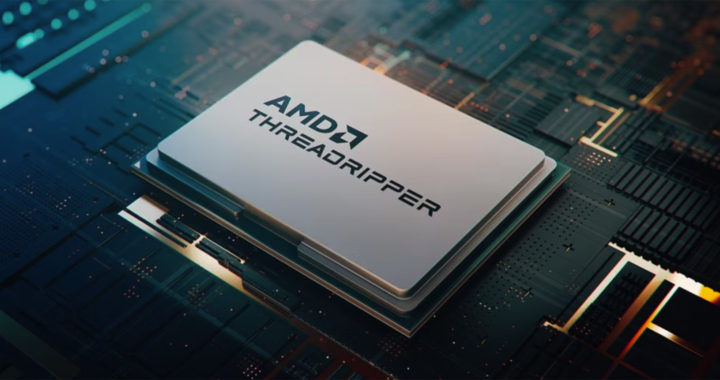AMD introduced the AMD Ryzen Threadripper line of central processing units in 2017. This marked a more focused attention on the specific workstation and enthusiast segments of the greater CPU market. Processors under this sub-brand are geared toward high-performance computing requirements. They are also positioned as direct rivals of processors under the Intel Xeon line. This review article highlights and discusses the general advantages and disadvantages of AMD Ryzen Threadripper CPUs.
Pros: Advantages of AMD Ryzen Threadripper and Notable Capabilities
Remember that AMD Ryzen Threadripper CPUs are designed for workstations. What sets them apart from mainstream Ryzen processors is their higher core and thread counts that come on top of other technologies for boosting productive use cases. These CPUs also differ from the specific Ryzen PRO CPUs for mobile workstations because of their specific focus on desktop workstations. The following are the advantages and capabilities:
1. Designed For High-Performance Computing Through Higher Core and Thread Counts, Higher Clock Speeds, and Large Amounts of Cache Memory
One of the advantages of AMD Ryzen Threadripper is that it is built with resource-demanding productivity use cases and software applications in mind. The performance capabilities of processors under this line come from their higher core and thread counts, higher base and maximum clock speeds, and large amounts of cache memory.
The base model of this sub-brand has 12 cores and 24 threads, a 4.1GHz base clock speed that boosts up to 4.5 GHz, and a 6MB L2 memory cache and 64MB L3 memory cache. The top-tier models have up to 96 cores and 192 threats, a base clock speed of 2.5GHz that boosts up to 5.1GHz, and 96MB L2 cache and 384MB L3 cache.
Nevertheless, because of their specifications, these CPUs are better suited both for heavily threaded applications and single-thread applications. Their specific use cases center on running demanding software applications and tasks such as high-definition video editing, scientific computing, three-dimensional rendering, and engineering applications.
2. Tested and Proven Processing Capabilities Through Advanced AMD Technologies Based on Different Benchmark Test Results and Real-World Test Results
Several test results have shown the dominance of several AMD Ryzen Threadripper processors over selected models of Intel Xeon processors. The Threadripper PRO 5995WX performs 37 percent faster in Autodesk Maya, 47 percent faster in Corona Render, and 52 percent faster in Unreal Engine compared to the Intel Xeon W9-3945X.
The processing capabilities of these processors come from the integration of advanced and exclusive proprietary technologies. The AMD Infinity Fabric is a high-speed interconnect that links various components. It enables faster data transfer, lower latency, and higher bandwidth across processor cores, memory, and input-output devices.
AMD also uses a dynamic frequency technology called Precision Boost that adapts processor speed according to workload and power consumption. Memory Guard, Secure Processor, and PRO Manageability technologies power a set of business-critical features such as memory encryption, secure enclave, and remote system management.
Cons: Disadvantages of AMD Ryzen Threadripper and Key Limitations
1. Limited Mainstream Personal Computing Applications, Several Hardware Compatibility Concerns, and Notable Software Optimization Issues
These processors do not fare well when it comes to several mainstream PC applications or use cases. One of the disadvantages of AMD Ryzen Threadripper is that they do not provide the best value for PC gaming. Mainstream processors like Intel Core and AMD Ryzen can provide comparable or even better performance at a lower cost.
It is also important to highlight the fact that these processors require specialized motherboards with the TR4 and TRX50 chipset and sTRX4 socket. They also support DDR5 memory but are not backward compatible with older generations of double data rate memory and also require error correction code memory. These present hardware compatibility issues.
There are also software optimization issues. Not all applications can support their quad-channel memory and some may even perform worse with more memory channels. Several applications are also not optimized to take full advantage of their high core counts and multi-threading capabilities. These translate to restricted performance gains.
2. Advanced Technologies and Features Translate to High Costs of Purchasing Equipped Desktop Workstations or Implementing the Entire Platform
It is also important to note that AMD Ryzen Threadripper CPUs are more expensive than mainstream Ryzen desktop CPUs. They are also more expensive than top-tier Intel Core processors. Their high price tag comes from their advanced technologies and features that were developed to suit high-performance and productivity-centric use cases.
The hardware compatibility issues also mean that they require expensive and compatible components to support them. These processors also have a higher power requirement and generate more heat than their mainstream counterparts. These issues translate to a higher overall cost of implementing desktop workstations based on this AMD platform.
Nevertheless, considering the aforementioned, the high costs of purchasing or implementing a Threadripper-powered desktop workstation means that these processors are only suitable for users who need the most powerful and versatile processing capabilities. Using them for personal computing translates to a higher price-to-performance ratio.
Takeaway: Advantages and Disadvantages of AMD Ryzen Threadripper
AMD Ryzen Threadripper CPUs are designed for desktop workstations. Their high-performance processing capabilities make them ideal for professionals involved in intensive content creation or scientific applications. However, because they are enthusiast-level processors, they are expensive. There are also notable hardware compatibility and software optimization issues. They are also not suited for several mainstream applications because of their costs and the specified use cases which they were designed for. Mainstream PC users and PC gamers are better off purchasing and using a mainstream CPU with a discrete GPU.

